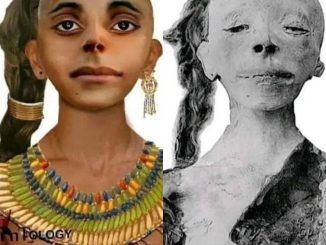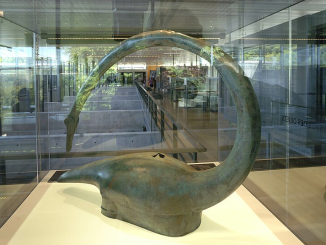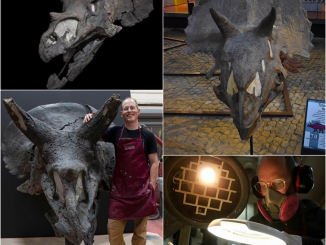In the quiet halls of the British Museum, amidst the hushed whispers of history, lies a relic of ancient Egypt that captivates the imagination and stirs the soul – the Sarcophagus lid of the Vizier Sasobek. Crafted during the Late Period, specifically the 26th Dynasty around 664-610 BC, this exquisite piece of funerary art is a testament to the grandeur and reverence of ancient Egyptian burial practices. From its finely carved features to the meticulously inscribed hieroglyphs, the sarcophagus lid offers a window into the beliefs and rituals of a civilization that thrived millennia ago.
The Sarcophagus lid of the Vizier Sasobek is a masterpiece of craftsmanship and symbolism. Carved from limestone with remarkable precision, it depicts the deceased Vizier Sasobek adorned in traditional Egyptian attire – wig, beard, and collar – a representation of his status and importance in society. What sets this sarcophagus lid apart from others of its kind is its naturalistic portrayal of Sasobek’s face, imbued with a serene expression that speaks of a tranquil afterlife.
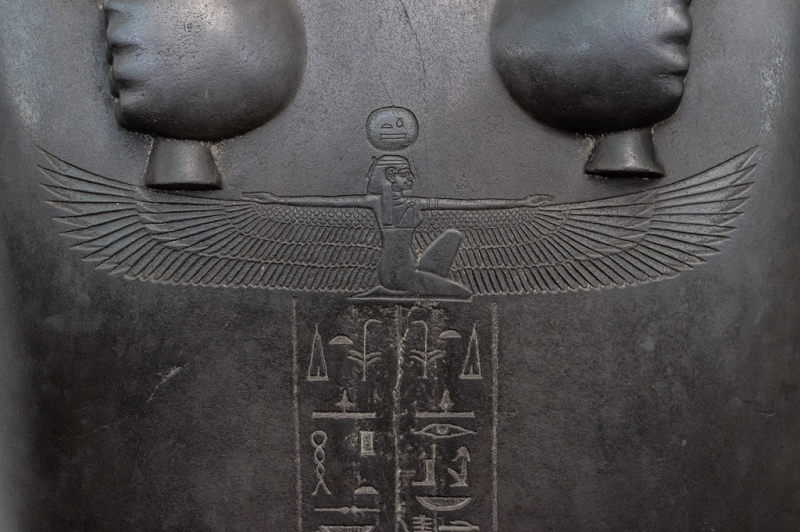
Upon closer inspection, one is drawn to the two vertical registers of hieroglyphic offering texts adorning the lid, symbolizing the prayers and blessings bestowed upon the departed soul. These inscriptions serve not only as a means of communication with the gods but also as a guide for Sasobek’s journey into the afterlife, ensuring his eternal prosperity and peace.
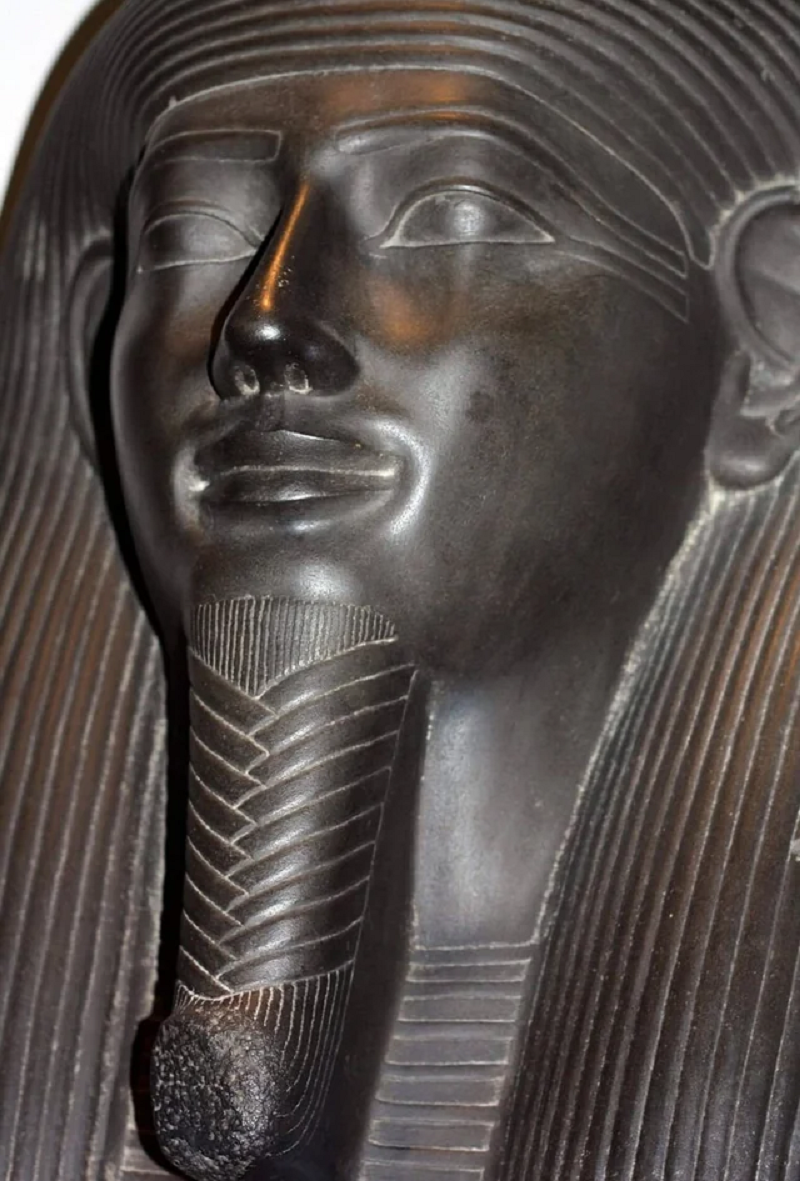
Above the hieroglyphic texts stands a figure of Nut, the goddess of the sky, her outstretched arms embracing Sasobek in a celestial embrace. This representation reinforces the belief in the continuity of life beyond death, with Nut acting as a guardian and protector of the deceased on their journey through the underworld.
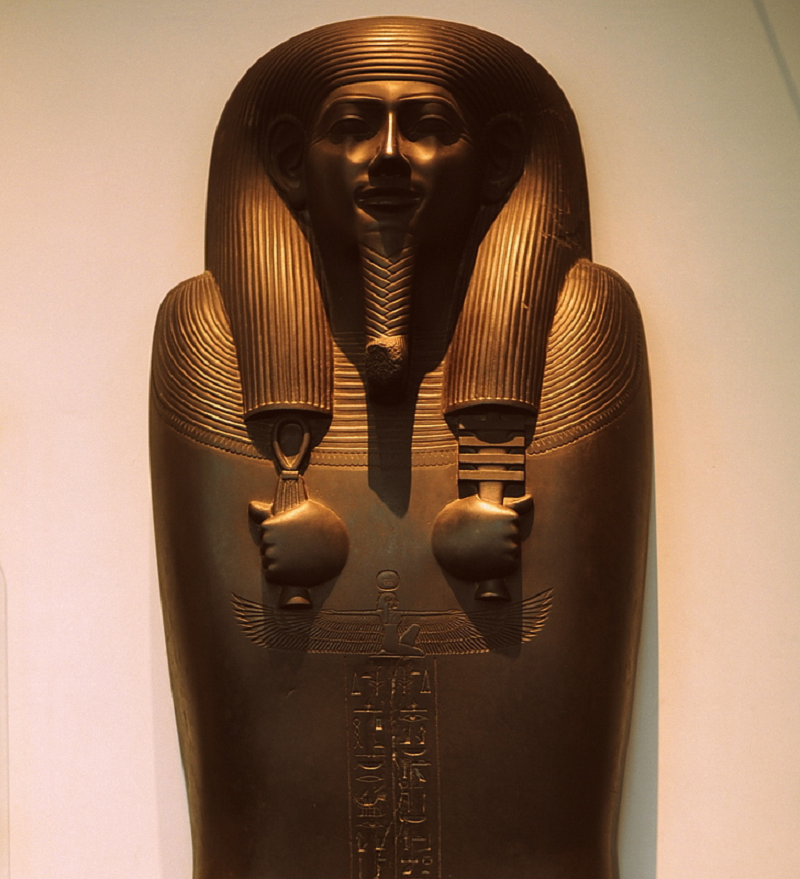
It is believed that the Sarcophagus lid of the Vizier Sasobek may have originated from Sais, the ancestral city of Psamtik’s family, adding another layer of historical significance to this already remarkable artifact. Sais, with its rich cultural heritage and association with the ruling elite, serves as a fitting backdrop for the final resting place of a Vizier of Sasobek’s stature.
In Sasobek’s hands rest the symbols of Osiris and Isis – the djed pillar and the tyet knot, respectively. These sacred objects not only represent the eternal cycle of life, death, and rebirth but also invoke the protection and guidance of the gods in the afterlife. Through these symbols, Sasobek is not merely a mortal being but a divine entity, destined for immortality among the pantheon of Egyptian deities.

Conclusion
The Sarcophagus lid of the Vizier Sasobek stands as a testament to the ingenuity, spirituality, and artistic mastery of ancient Egyptian civilization. From its finely carved features to its intricate hieroglyphic inscriptions, every detail of this remarkable artifact tells a story of devotion, reverence, and a belief in the continuity of life beyond death.
As visitors to the British Museum gaze upon this enigmatic relic, they are transported back in time to an era of pharaohs and pyramids, where gods walked among mortals and the promise of eternal life beckoned to all who dared to dream. In the presence of the Sarcophagus lid of the Vizier Sasobek, we are reminded of the enduring legacy of ancient Egypt and the profound mysteries that continue to fascinate and inspire us to this day.
